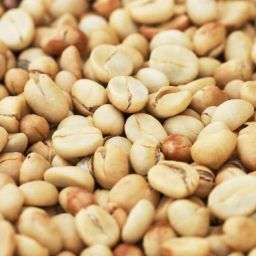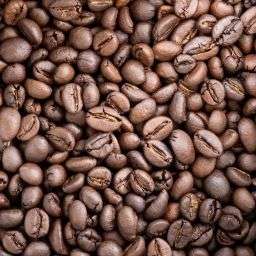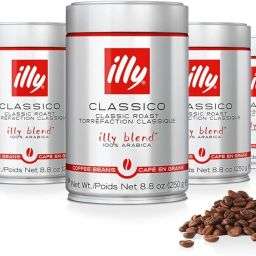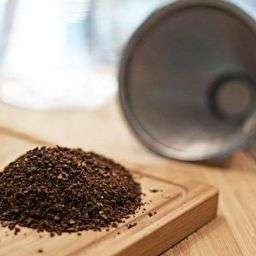
Espresso stands as a quintessential emblem within coffee culture, celebrated for its rich flavor and concentrated form. Originating from Italy, this beloved brew is crafted through the pressurized extraction of finely ground coffee, producing a small, yet potent shot that serves as the foundation for a myriad of coffee beverages. Its global acclaim not only underscores espresso’s unique taste profile but also its role in fostering social interactions and innovation within the realm of coffee brewing techniques.
Why Grinding Matters for Espresso
The process of grinding coffee beans plays a pivotal role in the quest for the perfect espresso. The grind size and its consistency are critical factors that directly influence the extraction process. A uniform grind ensures optimal water contact, allowing for a balanced extraction of flavors and oils.
Conversely, inconsistent grind sizes can lead to uneven extraction, resulting in a brew that may taste overly bitter or sour. Thus, mastering the art of grinding is essential for anyone looking to achieve espresso excellence.
The Perfect Grind Size for Espresso
The journey to espresso perfection begins with identifying the ideal grind size – typically fine to medium-fine. This specific grind size is crucial because it creates the perfect resistance to water pressure during extraction, facilitating a full-bodied and flavorful espresso shot.
The fine grind maximizes the surface area in contact with water, enhancing the extraction of the coffee’s rich flavors and aromatic oils. However, it requires precision; too fine, and the shot may become over-extracted and bitter; too coarse, and the espresso may turn out weak and underwhelming. Achieving the right grind size is a delicate balance, one that profoundly impacts the quality of the espresso.
Burr Grinder vs Blade Grinder
In the pursuit of the ideal espresso, the choice between a burr grinder and a blade grinder is pivotal. Burr grinders, favored for their precision, employ two abrasive surfaces that grind coffee beans to a uniform size. This method not only ensures consistency but also preserves the integrity of the coffee’s flavor profile.
In contrast, blade grinders, which use a spinning blade to chop beans, often produce uneven grounds and can introduce heat, potentially altering the coffee’s natural flavors. For espresso, where grind uniformity is crucial for optimal extraction, burr grinders unequivocally outperform their blade counterparts, making them the preferred choice among coffee aficionados.
Automatic vs Manual Coffee Grinders
When considering automatic versus manual coffee grinders for espresso, each presents unique advantages. Automatic grinders offer convenience and speed, with the ability to grind coffee quickly and with minimal effort. They often feature adjustable settings, allowing for precise control over grind size.
However, they can be more expensive and may introduce heat during grinding, which can affect coffee flavor. Manual grinders, on the other hand, afford users complete control over the grinding process, often resulting in a more consistent grind suitable for espresso.
They are typically more affordable and portable, though they require more time and physical effort. For those valuing precision and the ritual of coffee preparation, manual grinders are an excellent choice, while automatic grinders cater to those prioritizing convenience and efficiency.
How to Grind Coffee Beans for Espresso
Grinding coffee beans for espresso with a burr grinder involves a few meticulous steps to ensure the perfect grind size and consistency. Begin by selecting a fine to medium-fine grind setting on your burr grinder, as espresso requires a finely ground coffee for optimal extraction. Measure the desired amount of coffee beans, typically around 18 to 20 grams for a standard double shot, ensuring you’re using fresh beans for the best flavor.
Place the beans in the grinder’s hopper and initiate the grinding process, paying close attention to the grind’s consistency. Aim for a texture resembling fine sand, which is ideal for espresso. Once ground, the coffee should be used immediately to prevent oxidation, which can diminish its quality. By adhering to these steps and regularly cleaning your grinder to maintain its performance, you can achieve a consistently perfect espresso grind.
Adjusting Grinder Settings
Achieving the perfect espresso grind necessitates precise adjustments to your grinder’s settings. Start with a medium-fine setting and prepare a test shot, evaluating the espresso’s flavor and extraction time. If the shot pulls too quickly, resulting in a sour taste, adjust the grinder to a finer setting to slow the extraction and enhance flavor.
Conversely, if the extraction is slow and the taste overly bitter, a coarser setting is needed to quicken the flow and balance the flavor. This iterative process, requiring patience and experimentation, is essential for dialing in the exact grind size that yields a balanced and flavorful espresso shot.
Maintaining Your Grinder
Regular maintenance of your coffee grinder is crucial for ensuring consistent grind quality and extending the lifespan of the device. Clean the burrs monthly with a brush to remove coffee particles and oils that can accumulate over time, potentially affecting the grinder’s performance and coffee flavor.
For deeper cleaning, disassemble the grinder as per the manufacturer’s instructions and use a specialized grinder cleaner or rice to remove stubborn oils and residue. Reassemble carefully, ensuring all parts are correctly aligned. These maintenance practices will keep your grinder in optimal condition, ensuring the consistency and quality of your espresso grind.
The Importance of Fresh Coffee Beans
The freshness of coffee beans is paramount in determining the quality of espresso. Fresh beans contain essential oils and aromatic compounds that contribute to the espresso’s rich flavor and aroma. Over time, exposure to air, light, and heat can degrade these compounds, resulting in a stale taste.
To ensure the highest quality espresso, use beans within a month of their roast date and grind them just before brewing to maximize flavor and aroma extraction.
Proper Storage Techniques
Proper storage of coffee beans is vital for preserving their freshness and flavor profile. Store beans in an airtight container away from direct sunlight and sources of heat. Opt for a cool, dark location, such as a pantry or cupboard.
Avoid refrigerating or freezing coffee beans, as the condensation can affect their quality. By adhering to these storage techniques, you can maintain the freshness of your coffee beans, ensuring a consistently flavorful espresso.
Alternative Grinding Methods (Without a Grinder)
In scenarios where a grinder is not available, there are still methods to grind coffee beans for espresso, albeit with less precision. A mortar and pestle can be used to crush the beans to a fine powder, mimicking the consistency required for espresso. This method requires patience and effort to achieve uniformity.
Another approach involves using a rolling pin or a hammer to gently crush the beans inside a zip-lock bag. While these methods cannot perfectly replicate the consistency achieved with a burr grinder, they offer a viable alternative for those without access to specialized equipment.
FAQs
- What is the best grind size for espresso? The ideal grind size for espresso is fine to medium-fine, resembling table salt or fine sand, to ensure optimal extraction and flavor.
- Burr grinder or blade grinder: which is better for espresso? A burr grinder is superior for espresso because it provides a consistent and adjustable grind size, crucial for the espresso’s quality.
- How often should I clean my coffee grinder? Clean your coffee grinder at least once a month to remove coffee residue and oils, and perform a deep clean every 3-6 months for optimal performance.
- Can I grind espresso beans without a grinder? Yes, though less ideal, methods like using a mortar and pestle or a rolling pin can grind beans for espresso in the absence of a grinder.
- How does the freshness of coffee beans impact espresso taste? Fresh beans ensure a rich, full-flavored espresso by preserving essential oils and aromatic compounds. Stale beans result in a less vibrant and flat-tasting espresso.
Summarizing Key Takeaways
The journey to crafting the perfect espresso intertwines the art of selecting and grinding coffee beans with precision. The grind size, achieved most accurately with a burr grinder, stands as a pillar of espresso excellence, necessitating fineness and consistency.
Equally paramount is the freshness of the beans, which harbors the essence of the espresso’s rich and robust flavor. Embracing these principles ensures a rewarding espresso experience, highlighting the significance of each step in the path to the ultimate cup.









